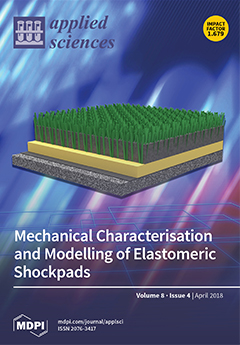Visible/near-infrared (Vis/NIR) hyperspectral imaging (400–1000 nm) was applied to identify the growth process of
Aspergillus flavus and
Aspergillus parasiticus. The hyperspectral images of the two fungi that were growing on rose bengal medium were recorded daily for 6 days. A band ratio using two bands at 446 nm and 460 nm separated
A. flavus and
A. parasiticus on day 1 from other days. Image at band of 520 nm classified
A. parasiticus on day 6. Principle component analysis (PCA) was performed on the cleaned hyperspectral images. The score plot of the second to sixth principal components (PC
2 to PC
6) gave a rough clustering of fungi in the same incubation time. However, in the plot,
A. flavus on day 3 and day 4 and
A. parasiticus on day 2 and day 3 overlapped. The average spectra of each fungus in each growth day were extracted, then PCA and support vector machine (SVM) classifier were applied to the full spectral range. SVM models built by PC
2 to PC
6 could identify fungal growth days with accuracies of 92.59% and 100% for
A. flavus and
A. parasiticus individually. In order to simplify the prediction models, competitive adaptive reweighted sampling (CARS) was employed to choose optimal wavelengths. As a result, nine (402, 442, 487, 502, 524, 553, 646, 671, 760 nm) and seven (461, 538, 542, 742, 753, 756, 919 nm) wavelengths were selected for
A. flavus and
A. parasiticus, respectively. New optimal wavelengths SVM models were built, and the identification accuracies were 83.33% and 98.15% for
A. flavus and
A. parasiticus, respectively. Finally, the visualized prediction images for
A. flavus and
A. parasiticus in different growth days were made by applying the optimal wavelength’s SVM models on every pixel of the hyperspectral image.
Full article





